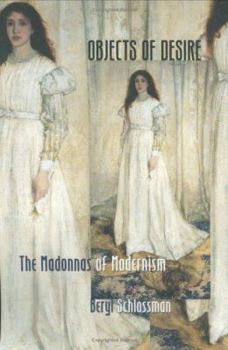Objects of Desire: The Madonnas of Modernism
Continuing her highly regarded analysis of Modernism and its relation to earlier periods of literature and thought, Beryl Schlossman explores secular Modernist use of female characters--"madonnas of Modernism"--as emblems of forbidden desire. Although these works appear to depict characters who assume conventional gender roles, Schlossman asserts, their renderings of scenes of love ultimately blur gender identity and dissolve it in the text. Through an innovative use of style, her literary examples articulate an art of seduction and an aesthetic that transforms, suspends, or erases identity--individual, gender, social, and cultural. Schlossman traces the origins of Modernist views on love to Plato's Symposium and Sappho's poems. She recounts how these works were crucial to the creation of a Renaissance culture of love, how elements of this culture reappeared in the Romantic movement, and, finally, how Gustave Flaubert, Charles Baudelaire, W. B. Yeats, James Joyce, and others reshaped this aspect of Romanticism in their own writings. According to Schlossman, Flaubert and Baudelaire inaugurated a Modernist sensibility; in their works eroticism shares secular and religious qualities. Their figures of love were ultimately reinscribed by Joyce in his texts of high Modernism, which were themselves influenced by the style of his precursor Yeats.
Format:Hardcover
Language:English
ISBN:0801436494
ISBN13:9780801436499
Release Date:January 1999
Publisher:Cornell University Press
Length:235 Pages
Weight:1.10 lbs.
Dimensions:0.8" x 6.2" x 9.2"
Customer Reviews
0 rating





